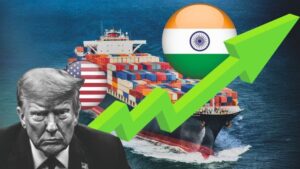
In a new research titled Navigating the Fault Lines of Global Trade: An Indian Perspective, business decisioning data and analytics provider Dun & Bradstreet India provides a thorough examination of the changing trade environment and its effects on Indian exporters.
According to the research, the trade environment has altered dramatically as tensions over international trade escalate and the US reassesses its economic involvement. Indian companies must be prepared to take advantage of recently developed export prospects while reducing growing dangers.
A few important points are highlighted in the report:
Through extensive, cross-border measures, recent US tariff actions hit a wide variety of trading partners, including India, and represent a fundamental shift in global trade strategy.
Over 3,100 of India’s 3,934 product lines that are exported to the United States are currently subject to a flat tariff of 10 per cent, while 343 are subject to a 25 per cent charge. Among the industries most susceptible are textiles.
According to the report, India is in a strong position to increase its market share in the United States for 360 high-potential products. There are many opportunities in home textiles, among other things.
To assist firms focus where it counts most, products are mapped into four zones: Margin Traps, High Risk–High Reward, Sweet Spots, and Non-Core.
“This represents a significant change in the global trade environment,” stated Arun Singh, Dun & Bradstreet’s Global Chief Economist. India is in a position to transform the current global shifts into long-term success with the support of deliberate, strategic actions. Indian exporters have an opportunity to increase their presence in important industries as supply chains diversify and trade regulations change. India must embrace forward-thinking tactics that strike a balance between risk management and market expansion in order to fully benefit from this change, particularly in margin-sensitive sectors like advanced manufacturing inputs, speciality chemicals, medicines, and textiles.






